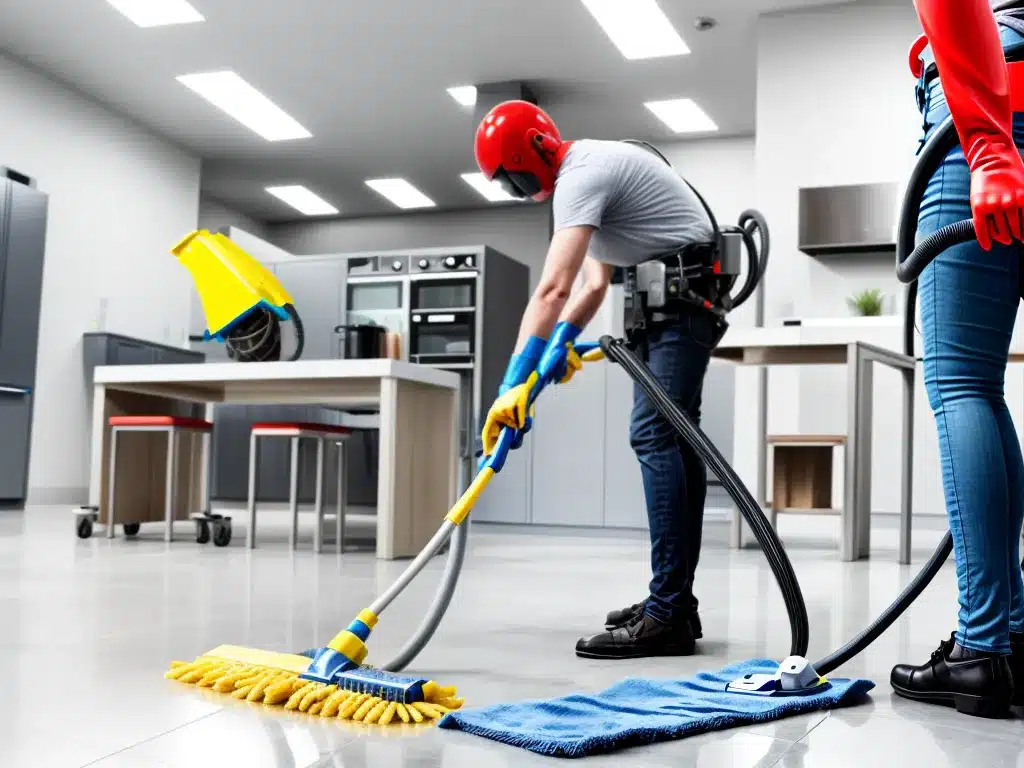Introduction
The cleaning industry has undergone significant changes in recent years due to advancements in robotics and automation. As someone who follows emerging technologies closely, I’m fascinated by the ways these innovations are transforming how cleaning tasks are performed. In this article, I’ll provide an in-depth look at the robotics and automation trends that are revolutionizing the cleaning industry.
Growth of Smart Home Devices
One major trend is the proliferation of smart home devices like robotic vacuum cleaners and mops. Brands like iRobot and Ecovacs have popularized robot vacuums through products like the Roomba and Deebot. These devices use sensors and mapping technology to autonomously navigate and clean floors.
The benefits of robot vacuums include:
- Requiring less effort to clean floors regularly
- Improving cleaning efficiency in hard-to-reach areas
- Removing dust and allergens from carpets and hard floors
Robotic mops like the iRobot Braava also automate floor cleaning using wet mopping pads. Smart home devices allow for more frequent cleaning with less labor required. Their adoption is growing rapidly. According to Allied Market Research, the global robotic vacuum cleaner market size was valued at $4.4 billion in 2019 and is projected to reach $10.3 billion by 2027.
Automated Cleaning of Large Spaces
Another emerging technology trend is using autonomous mobile robots (AMRs) to clean large commercial spaces. AMRs are robot platforms that can navigate independently and complete cleaning tasks with minimal human intervention.
Major vendors offering AMR cleaning robots include:
- Brain Corp: Provides the AI and robotics software for AMRs. Partners with cleaning equipment manufacturers.
- Avidbots: Creates the Neo autonomous floor scrubber. Uses LiDAR and AI for navigation.
- SoftBank Robotics: Produces the Whiz commercial cleaning robot that vacuums and sweeps.
These robots automate push broom, mopping, vacuuming, and sweeping tasks in spaces like retail stores, airports, offices, and more. According to Mordor Intelligence, the cleaning robots market is projected to reach $24.84 billion by 2030.
Computer Vision and AI
Developments in computer vision and artificial intelligence are enabling cleaning robots to operate more efficiently.
- Computer vision algorithms allow robots to comprehend their surroundings and identify objects or spills that need cleaning.
- AI planning enables robots to map out cleaning routes and adapt to changes in the environment.
- Machine learning improves the cleaning capabilities of robots over time.
For example, the Brain Corp AI software leverages deep learning and neural networks to enhance robot navigation, object recognition, and situational awareness. These AI advances will enable cleaning robots to handle more complex real-world environments.
Integration With Smart Home Ecosystems
Many cleaning robots are integrating with smart home platforms like Amazon Alexa, Google Assistant, and Apple HomeKit.
Key examples include:
- iRobot products work with Alexa and Google Assistant for voice control.
- Ecovacs Deebot robots are compatible with Alexa and Google Home.
- Neato bots can be controlled via Alexa skills or IFTTT applets.
Connecting cleaning robots to smart speakers and hubs allows for convenient hands-free control using voice commands. It also enables seamless integration with other smart devices and automation routines. This ecosystem integration expands the utility of cleaning robots.
Focus on Ease of Use and Mapping
Makers of cleaning robots aim to make their products as easy to use as possible for consumers. Simplified controls, scheduling options, and improved navigation are key focus areas.
- User-friendly apps enable intuitive control and scheduling from smartphones.
- Automatic mapping and localization with simultaneous localization and mapping (SLAM) allows robots to efficiently navigate environments.
- Self-emptying models like the iRobot Roomba s9+ eliminate the need to manually empty dustbins.
These ease of use enhancements lower the barrier to adoption of cleaning robots in homes. Better usability coupled with powerful mapping capabilities enable the robots to clean efficiently with minimal input from users.
Conclusion
From robotic vacuums to AMRs that clean commercial spaces, robotics and automation are disrupting the cleaning industry. With further improvements in computer vision, AI, and cloud-connectivity, cleaning robots will become smarter and more capable. As someone passionate about technology, I find this robotics revolution in cleaning quite exciting. It will be interesting to see how cleaning tasks continue to be redefined and automated in the coming decade through cutting-edge innovations.







